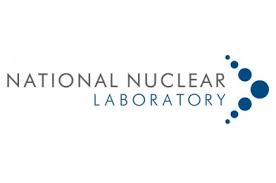Americium is a highly radioactive element that does not occur in nature. It is produced when plutonium decays. Plutonium is produced in nuclear reactors. Researchers at the National Nuclear Laboratory (NNL) and University of Leicester in the U.K. are exploring the possibility of using americium to produce electricity. They have extracted americium from some of the U.K.’s stockpile of plutonium and used the heat from the americium to produce enough electricity to light a small bulb.
Space batteries are used in space probes when the probe has flown so far from the sun that solar panels can no longer produce the power needed. Americium is being considered for use in space batteries.
Chris Skidmore is the Science Minister for the U.K. He said, “This remarkable breakthrough sounds like something from a science fiction film but it is another brilliant testament to our world leading scientific and university communities and their commitment to keeping the UK at the very frontier of developments in space technology and research for energy requirements in difficult environments. It is on the foundations of such discoveries that we can create the highly skilled jobs of the future, supported through our modern Industrial Strategy and record level of government investment in R&D.”
The research program into applications of americium has been going on for several years. Funding has been provided by the European Space Agency (ESA). European Thermodynamics Ltd helped develop the thermoelectric generator used in the experiments. The U.K. Nuclear Decommissioning Authority provided the plutonium to the researchers.
Richard Ambrosi is a professor of Space Instrumentation and Space Nuclear Power Systems at the University of Leicester. He said, “In order to push forward the boundaries of space exploration, innovations in power generation, robotics, autonomous vehicles and advanced instrumentation are needed. Radioisotope power sources are an important technology for future European space exploration missions as their use would result in more capable spacecraft, and probes that can access distant, cold, dark and inhospitable environments. This is an important step in achieving these goals.”
Tim Tinsley is the NNL’s account director for this research program. He said, “Seeing this lightbulb lit is the culmination of a huge amount of specialist technical work carried out by the teams from NNL and Leicester, working in collaboration with other organizations such as ESA and UK Space Agency. Leicester University's capability in development of the radioisotope power systems was complimented by NNL's expertise in handling and processing americium in our unique lab facilities. It is great to think that americium can be used in this way, recycling something that is a waste from one industry into a significant asset in another. You need access to americium, which is not easy. Current technology uses Pu238 instead which is very hard and very expensive to produce.”
Space agencies other than the ESA have expressed an interest in americium as a power source. The researchers hope to have a working model in the next decade for use in a lunar mission. Americium is also being considered for power generation on Earth where it could be used to generate power for hundreds of years without the need for refueling.
Adrian Bull is a NNL spokesperson. He said, “Some current probes use an isotope of plutonium for this purpose - but that's in increasingly short supply. This route of using Americium takes something that's generally regarded as a problem and turns it into an asset. Our work is funded by the European Space Agency and they are interested to use the americium approach for future European space missions.”
Tinsley says, “We 'clean' the americium from it, which would have been a waste. With sufficient applications, all of the UK plutonium could be 'cleaned' of the americium. The returned plutonium is in a better condition, ready for further storage or reuse as nuclear fuel.”
Bull says, “The americium in plutonium is potentially a problem for re-using the plutonium as new fuel. In extracting the americium from aged plutonium stocks, we end up with both the separated americium and also 'cleaner' plutonium - for potential re-use in the fuel cycle. So it's a win-win.”
Keith Stephenson is the program lead from the ESA for the research program. He says that americium batteries have a huge energy density that will permit space missions that would have been impossible otherwise. He also said, “This successful collaboration between the nuclear and space sectors has created a brand-new capability for Europe and opens the door to a future of ambitious and exciting exploration of our solar system.”
